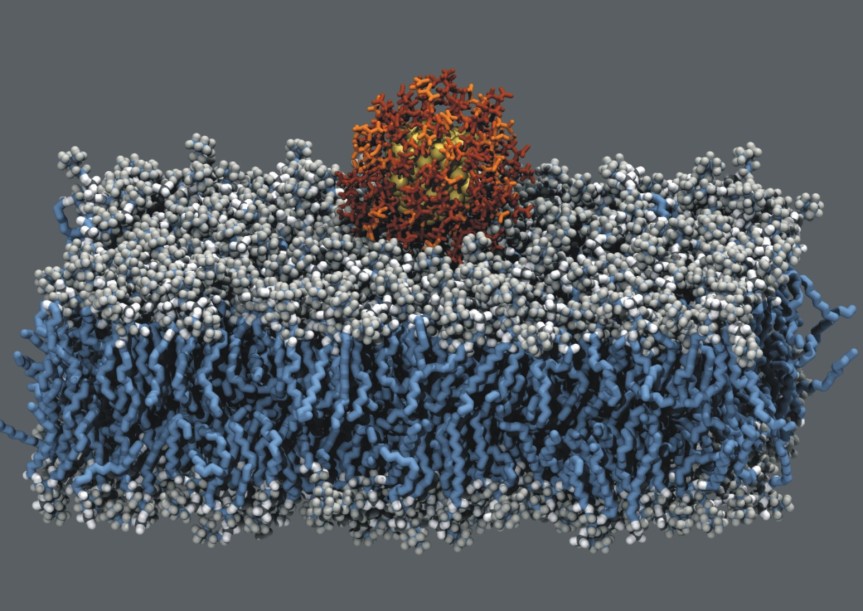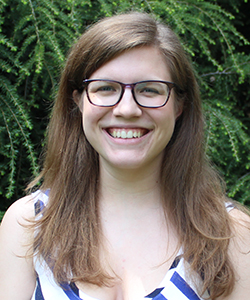
Featured Image: A visualization of a gold nanoparticle impinging on a cell wall, made of two layers of fatty molecules that repel water on both sides and keep a bacterial organism safe from the outside world. (courtesy S. Nielsen, UT Dallas)
This week, we interviewed PhD candidate Anne McCabe about bacterial cell walls and antibiotics! Anne works in the Department of Molecular Biology’s Silhavy Lab here at Princeton to decode how bacteria build protective cell walls around themselves. Understanding the genetics behind this construction could allow us to crack it, opening the pathway towards new antibiotics to stop diseases.
A cell needs to isolate itself from the outside world somehow, and an easy way to do that is with fatty molecules that repel water on one side. Still, a cell needs to eat and exchange material with the outside world, so it has proteins embedded in the cell wall that intelligently sift particles from outside to inside and vice versa.
Anne deciphers the behavior of these protein ports through the wall by messing with the genetic codes of bacteria. She can introduce mutations in E. Coli’s genome that weaken its cell wall, making the bacteria weak to external dangers like antibiotics. As generations of bacteria suffer through the antibiotic onslaught, a few develop new mutations that help them survive, allowing Anne to track which proteins are defending the bacteria from our medicines.
Deconstructing bacterial defense is a complicated process, because a lot of cell wall proteins act together to protect bacteria from our attacks. But we need to figure it out–as antibiotics are overused in our society, many bacteria are slowly developing resistance to our medicines. If we want to protect ourselves against infections and disease, we need to discover new types of antibiotics and stay a step ahead of bacterial evolution. Anne’s research is a key approach to find more venues for productive medicines, but there’s a lot of options that deserve investigation: some come from soil microbes, others from the backs of sloths.
 Finally, Anne is the recent chair of the Princeton Graduate Molbio Outreach Program, a huge organization of graduate students that arrange outreach in schools and at public events around the community. They have programs for children and adults, and aim for long-term collaborations between researchers and students. Look them up!
Finally, Anne is the recent chair of the Princeton Graduate Molbio Outreach Program, a huge organization of graduate students that arrange outreach in schools and at public events around the community. They have programs for children and adults, and aim for long-term collaborations between researchers and students. Look them up!
In the last few minutes of our broadcast, Stevie came on with two exciting stories of new science out this week. First, the company SpaceX has landed a space-going rocket on a barge in the Atlantic, finally successful after two previous attempts. This achievement means that the rocket gets recycled for another trip into orbit, dramatically lowering the cost of space flight for its next payload. It’s big news for a company that strives to make rocketeering economical.
We closed the show with a word about sonar: it’s being used for archaeology! A 200-foot object has been located with sonar off the coast of North Carolina, and there’s a good chance it’s the long-lost Agnes E. Fry shipwreck from the Civil War. The water is too dark and murky for surveying divers to see, so they’re taking images with sonar and mapping out the structure of the ship.
A full playlist can be found here and on WPRB.com. Thanks for listening!

